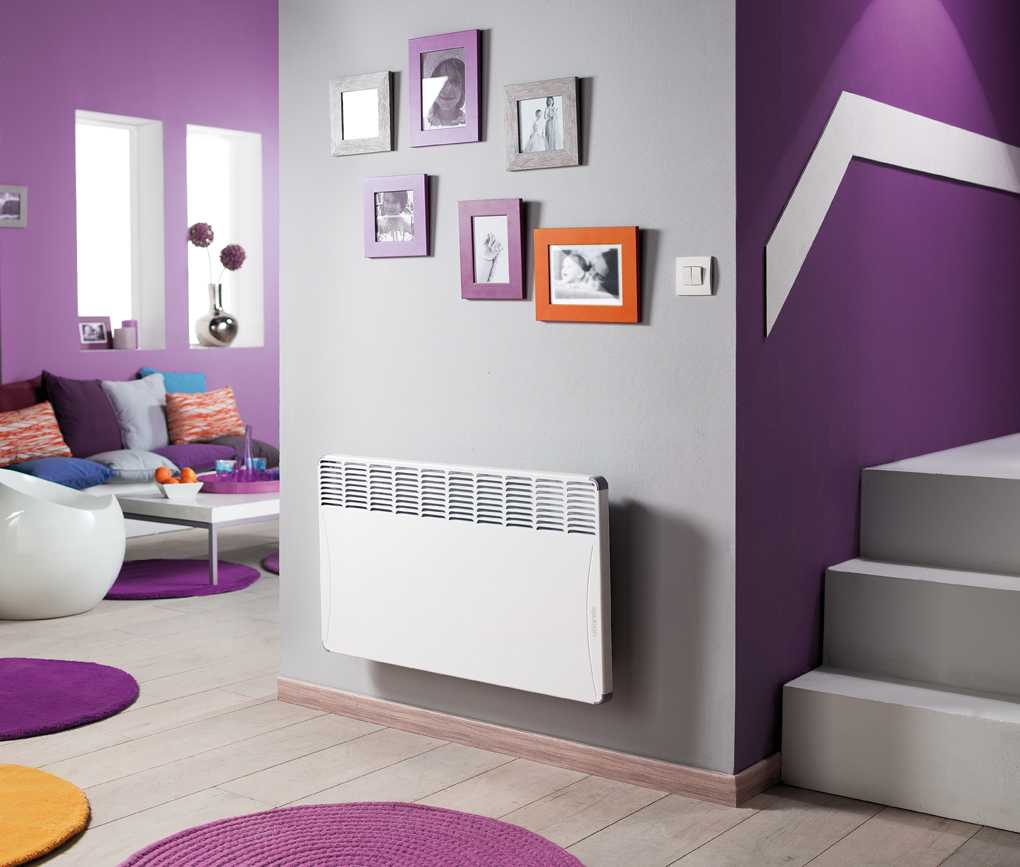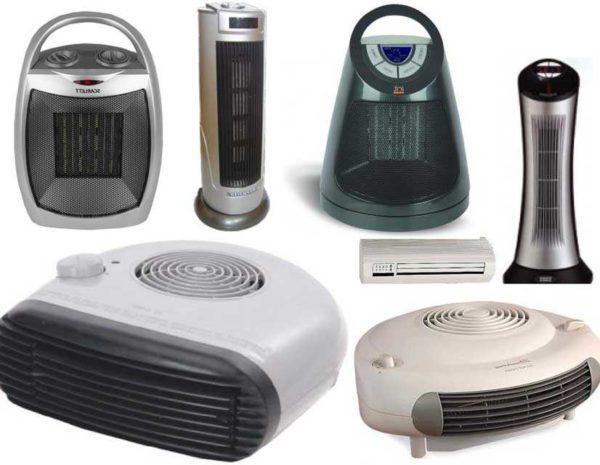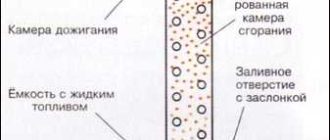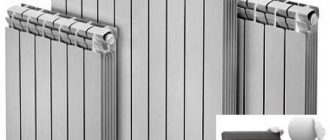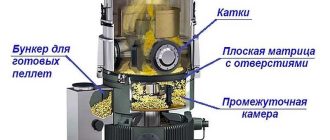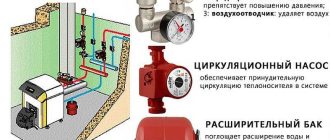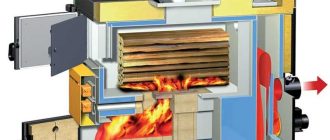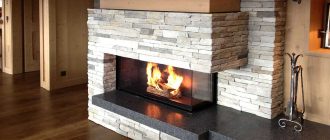Winter in our country sometimes throws up surprises in the form of abnormal cold weather. Such that even a normally working central heating system fails to cope and the apartment becomes cold. And in some cities it can not cope even with relatively small frosts. At the dachas usually the situation is different – there you need to “catch up” a comfortable temperature for the time of arrival. In any case, without a heater to do without. About what they are, how to choose, how to decide which heater is better, and we will talk further.
Conteúdo do artigo
Types of heaters
In apartments, heaters are most often used as an additional source of heat at a time when the main heating does not cope and the room is chilly. In dachas, heaters are needed most often for the fall and spring period, but there is rarely another source of heat, so the approach when choosing is a little different.
In general, there are four types of heaters:
Heaters for apartments and dachas should meet several requirements. First, they must be safe. This is probably the main criterion of choice, especially if there are small children in the family. One of the key points of safety is the presence of protection against overheating – the equipment should automatically shut down when the critical temperature is reached. Secondly, the heater should be efficient and, very preferably, it should have the function of supporting the set temperature mode. In addition to the fact that it is convenient, it also saves electricity – the heater turns on and off, and does not work constantly. Deciding which heater is better for you, these points should be monitored. They are really important. Here from these points of view, as well as their economy and consider all types of heaters.
Heaters
Electric Heat Fans. This appliance has a heating element and a fan. The fan drives air through the heating element, it heats up and carries heat into the room.
Vantagens e desvantagens
The advantage of this type of heater is an almost instant start. After switching on, less than a minute passes and “chase” he begins to “chase” already warm air. The second positive point is the small size and weight, hence the high mobility. And the third plus – low price. If you decide which heater is better to choose for quick heating of the air in a small room that the fan heater is probably out of competition. There are quite serious disadvantages of these devices:
- When working create a constant noise – the fan works.
- If the heating element is a spiral, it burns out oxygen and there is an odor of burnt dust. Other models with heating elements and ceramic plates are better in this respect, but not so quickly warm the air – they have a temperature 4 times lower (the spiral is 800 °, the rest – about 200 ° C).
- The air gets dried out. To neutralize this effect, there are models with ionizers and humidifiers, but they no longer belong to the class of inexpensive.
Heat fans – different models, purpose, capacity
Despite all these disadvantages, if you need to quickly warm the air (the walls in this way you will warm up for a very long time), there is no better way out.
Types and features
Heat fans are available in different versions:
- desktop – very compact, low power, suitable for local heating;
- floor – larger, often look like a column, may have a movable part, spreading hot air throughout the room;
- wall-mounted – more expensive models, often have a remote control;
- ceiling-mounted – productive units with a rather large set of service functions.
| Nome | Tipo | Consumo de energia | Heating capacity | Type of heating element/number of heating elements | Number of operating modes/additional functions | Preço |
|---|---|---|---|---|---|---|
| Polaris PCDH 2515 | Desktop | 1500 W | 1.0/1.5 kW | ceramic / 1 pc | 3 | 13$ |
| Scarlett SC – FH53K06 | Desktop | 1800 W | 0.8/1.6 kW | ceramic / 1 pc | 3 /thermostat, rotation, overheat cutoff | 17$ |
| De Longhi HVA3220 | Desktop | 2000 W | 1.0/2.0 kW | FET / 1 pc | 2 / ventilation without heating | 28$ |
| VITEK VT-1750 BK | Floor standing | 2000 W | 1.0/2.0 kW | ceramic / 1 pc | 3 / thermostat | 24$ |
| Supra TVS-18PW | Floor standing | 2000 W | 1.3/2.0 kW | ceramic / 1 pc | electronic control, rotation, temperature maintenance, econm mode | 83$ |
| Tefal SE9040F0 | Floor standing | 2000 W | 1.0/2.0 kW | ceramic / 1 pc | 2 /electronic control, rotation, timer off, remote control | 140$ |
| Scarlett SC – FH53006 | Desktop | 2000 W | 1.0/2.0 kW | spiral | 3 / ventilation without heating, overheating cutoff | 13$ |
| Electrolux EFH/W – 7020 | Wall-mounted | 2000 W | 1.0/2.0 kW | ceramic / 1 pc | 3 /electronic control, temperature maintenance, for humid rooms | 65$ |
| Polaris PCWH 2074D | Wall-mounted | 2000 W | 1.0/2.0 kW | ceramic / 1 pc | 3 /electronic control, switch-off timer, smooth temperature control | 49$ |
| Timberk TFH W200.NN | Wall-mounted | 2000 W | 1.0/2.0 kW | ceramic / 1 pc | 3 / remote control, protection against overheating | 42$ |
As you can see, there are different heaters, for different needs and for any purse. In this segment there is a very solid difference in price between well-known brands and lesser-known brands, and the choice is very large. Moreover, there are even different stylistic solutions – from classic to high-tech and other new-fashioned trends.

Convectors
Electric convectors have a similar principle of operation to heat fans – the air passes through the heating element, heats up and spreads heat around the room. The difference is that the movement of air in convectors is due to the natural process of convection – the property of warm air to rise up and for its movement fans, in principle, are not needed. But the air movement in such heaters is slow, and a cold room will take a long time to warm up. To correct this disadvantage, fans are also built into convectors, which, if necessary, activate heating. However, the main difference between convectors and fan heaters is that they can work without a fan, that is, completely silent. This is a very important quality at night.
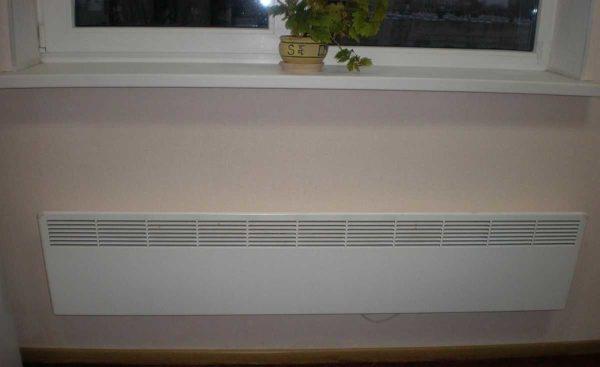
Types of heating elements and thermostats
Heating element in convectors can be of different types:
- Known to everyone dry TEy – a proven option, not very expensive. To the tube of the TEN are attached aluminum plates – to improve heat transfer.
- Needle – inexpensive, but has a short service life. Heats up almost instantly, but burns out very quickly.
- Monolithic – the most expensive, but also the most durable. Its ribs are part of the body, when heated, they expand proportionally with the body, which extends the service life.
If we talk about what type of convector is better, then definitely with a monolithic heating element. Although it costs a lot, it will serve for a long time.
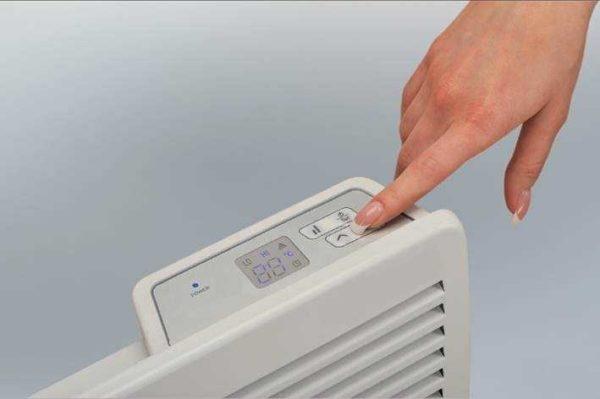
In any electric convector there is a thermostat. They are thermostats of two types – mechanical and electronic. Mechanical are much cheaper, but they have a higher power consumption, are characterized by a solid error in maintaining the temperature, when working click, which can be very annoying. There are still quite simple mechanical thermostats. They do not maintain the temperature, but have two (sometimes more) modes of operation at different power. They are switched manually – usually by turning the knob-regulator. Convector heaters of this type are the cheapest.
Electronic are accurate, noiseless, require very little electricity. In addition, such models can be controlled with a remote control.
Recursos de design
By design, electric convectors are mainly hung on the wall – it is possible under the window instead of a traditional radiator, and it is possible in the place where you need. Most models can be mounted on legs. They can be included with the heater or sold separately.
In shape, electric convectors are parallelepipeds with different proportions. There are low and long – a good option for panoramic windows, if high and narrow – they can be placed in the partition, there are such sizes as heating radiators – they are traditionally placed under the windows – to cut off the cold air from the windows.
There are moisture-proof housing (IP24 protection against splashes), which allows you to use them for heating bathrooms.
| Nome | Consumo de energia | Heated area | Thermostat type | Type of heating element | Installation method | Preço |
|---|---|---|---|---|---|---|
| Electrolux ECH/AG 500 PE | 500 W | 5 sq. m | electronic, with LED display, timer for switching off | monolithic | wall-mounted, low (baseboard version) | 93$ |
| Electrolux ECH/AG 1000 MF | 1000 W | 5-10 sq. m. | mechanical, two power modes, air purification | wall-mounted / on legs | 53$ | |
| Electrolux ECH/AG2 – 1000 EF | 1000 W | 10-15 sq.m. | electronic, thermal protection, air filter | ceramic monolithic | wall mounted / on legs | 70$ |
| Aeg WKL 503 S | 500 W | 5 sq. m | electronic, overheating protection | Stainless steel heating element with copper heat exchanger | wall-mounted, can be used in the bathroom (splash-proof) | 93$ |
| Aeg WKL 1503 S S | 1500 W | up to 15 sq. m | mechanical, overheating protection | Stainless steel heating element with copper heat exchanger | wall-mounted, can be used in the bathroom (splash-proof) | 117$ |
| Aeg WKL 3003 S | 3000 W | up to 30 sq. m | mechanical, overheating protection | Stainless steel heating element with copper heat exchanger | wall-mounted, can be used in the bathroom (splash-proof) | 187$ |
| Ballu BEC/EZER-1000 | 1000 W | up to 15 sq. m. | electronic, tipping switch off, overheating protection | wall, floor | 50$ | |
| Ballu BEC/EM-1500 | 1500 W | up to 20 sq. m | mechanical | monolithic | wall/floor | 44$ |
| Ballu BEC/EVE – 2000 | 2000 W | up to 25 sq. m | electronic, LED display, ionizer, timer | monolithic | wall/floor | 80 $ |
| Hyundai H-HV5-10-UI609 | 1000 watts | up to 16 sq. m | mechanical, two power | needle | wall/floor | 44 $ |
| Hyundai H-HV1-10-UI562 | 1000 W | up to 13 sq. m | mechanical, temperature maintenance | monolithic | wall/floor | 65$ |
| Hyundai H-HV3-10-UI568 | 1000 watts | up to 14 sq. m. | electronic, LCD display, humidifier | monolithic | wall/floor | 80$ |
This type of heater can have the following useful options:
If we talk about which heater is better in this group, then definitely – with a monolithic heater and an electronic thermostat. These models ensure that the set temperature is maintained with high accuracy.

Oil radiators
This type of heaters has been known for a long time. It has a sealed body filled with technical oil. In the oil is immersed heating element – TEN. There can be several of them, they are usually turned on/off manually, by turning a knob/switch.
Vantagens e desvantagens
These heaters are good for both home and dacha. They are very reliable, rarely break down, have a safe design and relatively low prices.
Many people prefer this type of heaters, as they spread soft heat, even near them there is no discomfort. Prefer such heaters and families with children – the design is safe, the body heats up to no more than 60 ° C, which is unpleasant to touch, but absolutely safe. What is not very good – its large mass, so that if it falls on the child, it can traumatize him. On the plus side, it is also quiet in operation.
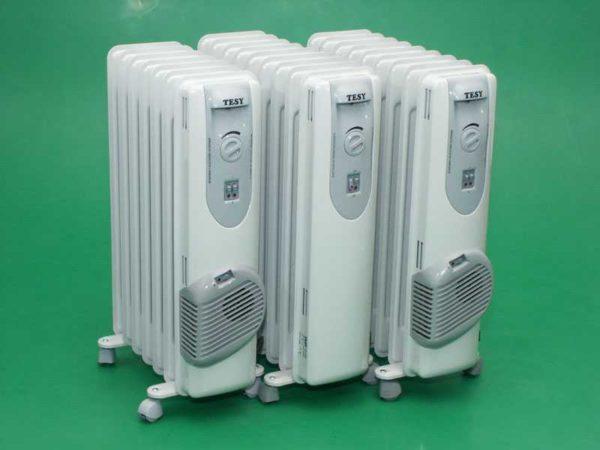
The main disadvantage of oil radiators is the low speed of heating the room. While the oil heats up, heats up the body, a solid period of time passes. Only after that the air starts to heat up. And the process is slow – only due to natural convection, which usually leads to the fact that near the heater is warm, a little farther away – cold.
Recursos de design
Oil radiators are usually made in the floor version, much rarer are wall-mounted models. The mass of these devices is quite solid, so that for easy movement they have wheels.
External design can be of three types. Most often there are radiators, something reminiscent of old cast-iron batteries – accordion. They also consist of sections welded together. The second kind – one or two or three almost flat panels, installed in parallel. Today, this type of oil radiator is not often found, but can be hung on the wall without legs.
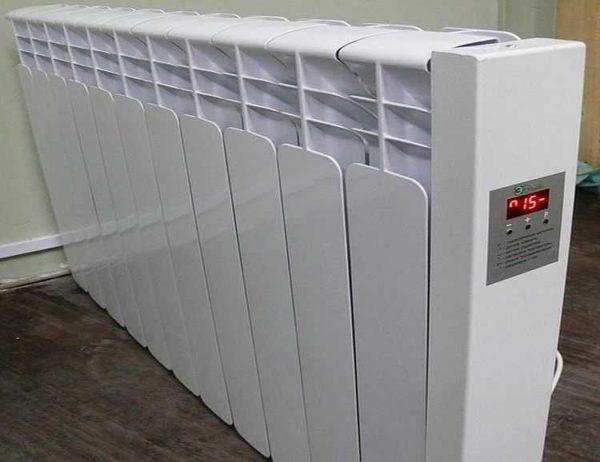
Another option of wall-mounted oil radiators – very similar in shape to modern aluminum radiators. They too can be used as wall-mounted or stand on legs with wheels.
| Nome | Power consumption / heating area | Number of heating modes | Funções adicionais | Tipo de montagem | Proteção contra superaquecimento | Preço |
|---|---|---|---|---|---|---|
| Electrolux EOH/M-5157 | 2000 W / 10 sq.m | 3 | Tipping shut-off | floor | é | 60$ |
| Electrolux EOH M-6221 620×475 | 2000 W / 27 sq.m. | 3 | floor standing | é | 65$ | |
| Scarlett SC-OH67B01-5 | 3000 W / 15 sq. m. | 3 | floor | é | 30$ | |
| Scarlett SC-OH67B01-9 | 1000 W / 25 sq. m. | 3 | floor | é | 52$ | |
| BALLU BOH/CL-07 | 1000 W / 20 sq.m. | 3 | floor | é | 50$ | |
| DeLonghi TRRS 0920 | 2000 W / 60 sq.m. | 3 | floor standing | é | 85$ | |
| Polaris PREM0715 | 2000 W / 15 m | 3 | floor | é | 55$ | |
| VITEK VT-1704 W | 2000 W / 15 m | 2 | 2 heaters | floor standing | é | 43$ |
| LVI Yali 05 130 | 1250 W / 12,5 m | 5 | energy-saving, air ionizer | wall-mounted | é | 514$ |
| Kalibr EMR- 2015 | 2000 W / 15 sq.m. | 3 | floor/flat | é | 60$ |
Heaters for home and cottage of this type are mostly simple and do not have a large set of additional functions. What in a normal oil radiator is always present – protection from overheating. This is critical for the TENS and for safety, so you can not do without this function. Rarely, in more expensive models, there is a function of disconnection when tipping over. This may be important if there are children in the family.
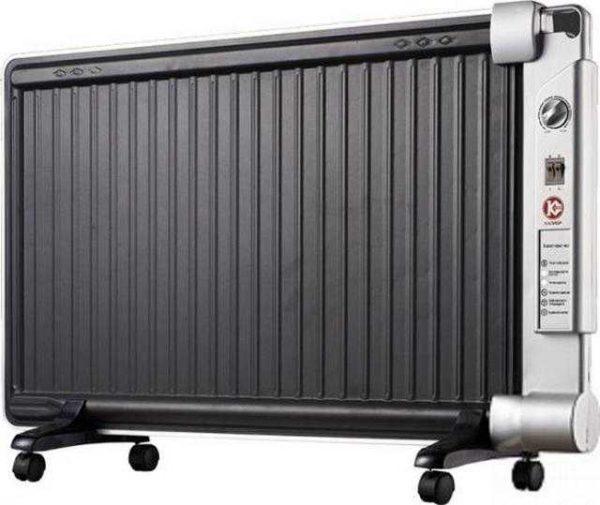
Deciding which of the oil heaters is better is not easy. There are no criteria other than suitable power and good user reviews.

Infrared heaters
Infrared heaters have appeared relatively recently and caused a wave of disputes. Some argue that they are useful, others – that they are harmful. It is difficult to decide which of them is right – the arguments of both sides seem convincing. Everyone, as usual, decides for himself to which camp he belongs.
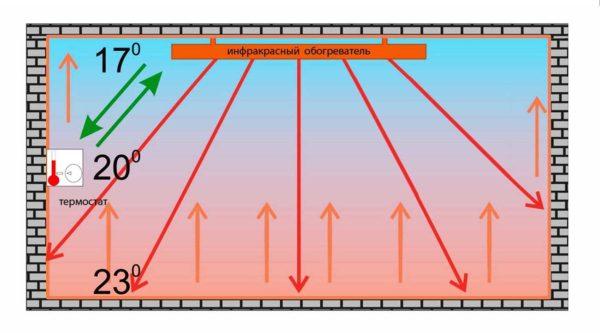
How it works and what are the differences
The basis of the infrared heater is a long-wave radiator, which produces electromagnetic waves in the same range as the sun – infrared. Such heat is perceived by our body as more pleasant – our body emits similar waves, so it is comfortable to be near such devices. To focus the radiation in the body of the infrared heater there is a reflector – it increases the efficiency of heating a certain area.
The main difference between this type of equipment is that it warms not the air, but the objects to which the rays are directed. And from their warm surface, the air is already heated. If you find yourself in the zone of action of the rays, and your body will be heated. On the one hand it is good, but on the other hand – not so good: in the zone of action of the rays is warm, outside it – cold. But you can focus the heat well into the right area. Up to the point that you can take the device outside/veranda and create an island of comfortable temperature in the cold.
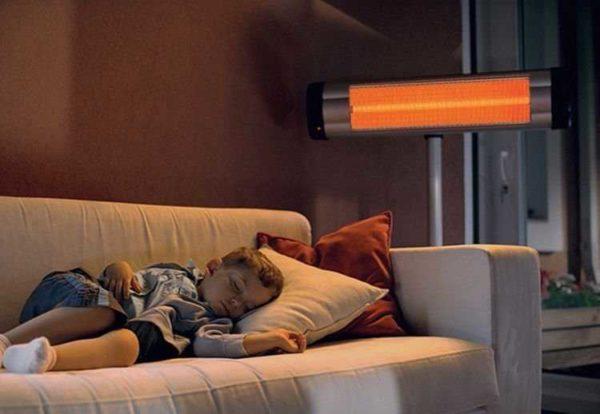
In general, it is noticed that when using infrared radiation we feel comfortable at lower temperatures – 2-3 degrees lower than when heating with any other devices. This means that less electricity is wasted.
Installation methods
In this category there are a variety of heaters and the form and method of installation. In addition, different sources of radiation are used – tubular radiators, infrared lamps, plates, carbon paste and much more. Mounted can be on the ceiling, walls, can stand on the floor. In general, the choice is really wide. And there are both models that can be used for full-fledged heating – stationary lamps, and to create more comfortable conditions in a separate area. These are portable radiators and heaters in the form of mats. Mats – this is definitely a local device, no matter what the sellers say. They are convenient to warm your feet (there are floor mats) and some area of the room – wall mats. They can be hung near the workplace or bed and enjoy the warmth.
| Nome | Mounting method | Consumo de energia | Heating area | Funções adicionais | Fabricante | Preço |
|---|---|---|---|---|---|---|
| THERMOPHONE ERGNA-0,7/220 | wall-mounted | thermoregulator | 10-17 sq. m | overheating protection | Russia Teplofon | 50$ |
| THERMOPHONE GLASSAR ERGN 0,4 | wall-mounted flat | 400 W | overheating protection | Russia Teplofon | 55$ | |
| MR. HIT THERMIK S-0,5 | wall-mounted flat | 500 W | 7-10 sq. m. | overheating protection | Russia Mr. Hit | 30$ |
| MR. HIT THERMIK S-1,2 | wall-mounted flat | 1200 W | 20-25 sq. m. | protection against overheating, infrared+covection | Russia Mr. Hit | 40$ |
| NOIROT CAMPAVER CMEP 09 H | wall-mounted flat | 900 W | digital control system | France | 940$ | |
| FRICO COMFORT ECV | wall-mounted cassette, above window | 300 W | 120$ | |||
| BALLU INFRARED FAR BIHP/F-1000 | floor, wall mounted | 600/1000 W | up to 15 sq. m. | overheating protection | 45$ | |
| BALLU INFRARED FAR BIHP/F-1500 | floor, wall mounted | 800/1500 W | up to 20 sq. m. | overheating protection | 52$ | |
| ALMAK IR-5 | ceiling | 500 W | 5-6 sq. m. | with external thermostat | Rússia | 46$ |
| ALMAK IK-16 | ceiling | 1500 W | up to 15 sq. m. | with external thermostat | Rússia | 74$ |
| PION LUX 04 | ceiling | 400 W | 4-8 sq. m. | light indicator of work | 42$ | |
| PION LUX 13 | ceiling | 1300 watts | 13-26 sq. m. | operation indicator light | 62$ | |
| MR. HIT IK-0.7 | ceiling | 700 W | 8-10 sq. m. | with external thermostat | Rússia | 34$ |
Choosing from this group which heater is better is not the least bit easier. It is necessary to focus on the tasks that it should perform. If you need to heat a particular place, the best option will be a floor model or wall model. If the heating zone should be quite small, a mat will do. For serious tasks – as the main heating or additional, but for the whole room it is worth considering wall or ceiling options.
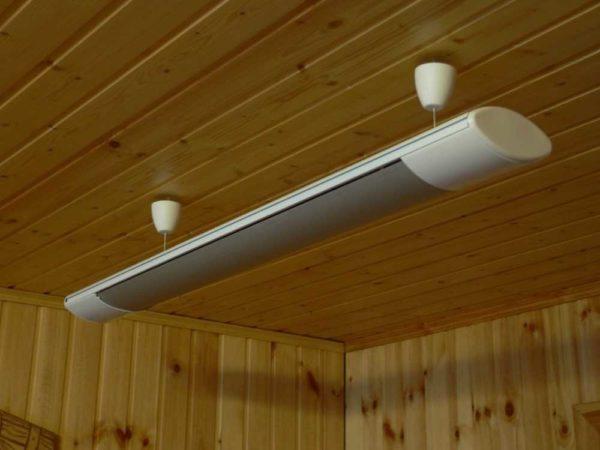
Note that some models work in tandem with external thermoregulators, but they are selected separately and their price is not included in the cost of the heater.

Which heater is better for the house, which – for the dacha
The choice of heater depends on the tasks it should perform. For example, in the dacha it is usually required to quickly heat the air to a comfortable temperature. And the device should not be heavy, small-sized and mobile – to be able to take it away for the winter without much trouble. These requirements are met by fan heaters, convectors and infrared heaters. Oil heaters are not the best choice in this case – they take a long time to warm up, they are heavy.
For apartments and houses in general, any of the above options will do. You choose the one that you like more than others or the one that best solves the tasks assigned to it. For example, if there is an allergic person in the family, it is better to exclude active air movement (convection) in this case. Infrared radiators and oil radiators almost do not stimulate convection.
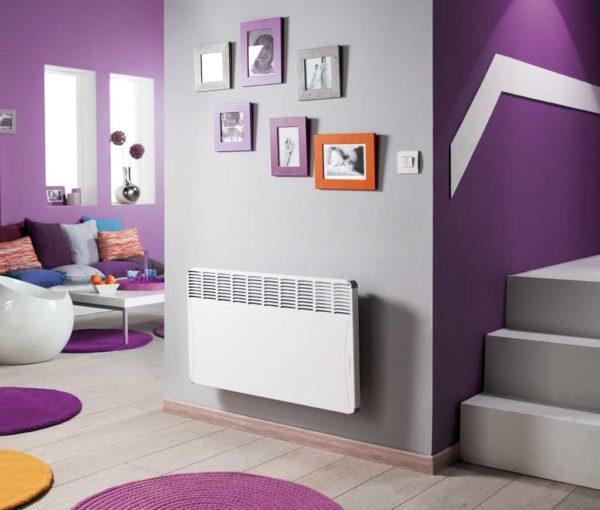
If there are small children in the house, air parameters are very important for them – there should be normal humidity, oxygen should be enough. To solve this problem, models with ionizers and humidifiers are suitable, and you can choose the type yourself.
Convectors and infrared heaters can solve the problem of heating in general (serve as the main source of heat). You can create a system of oil heaters, but it will be inert, it will be hard to regulate the temperature. Heat fans are not suitable for constant use, although there are models for long-term operation – with monolithic heating elements and electronic control.


